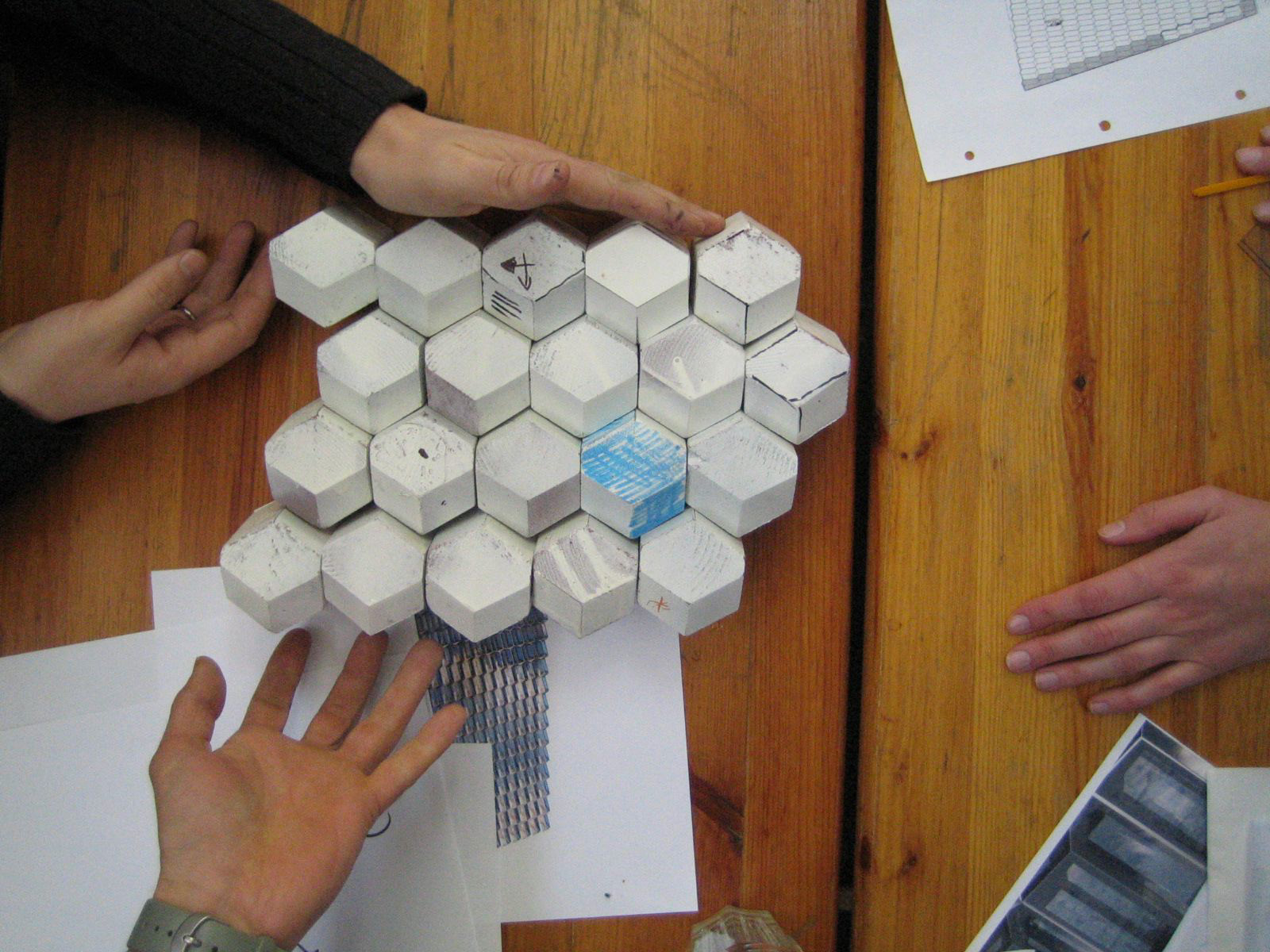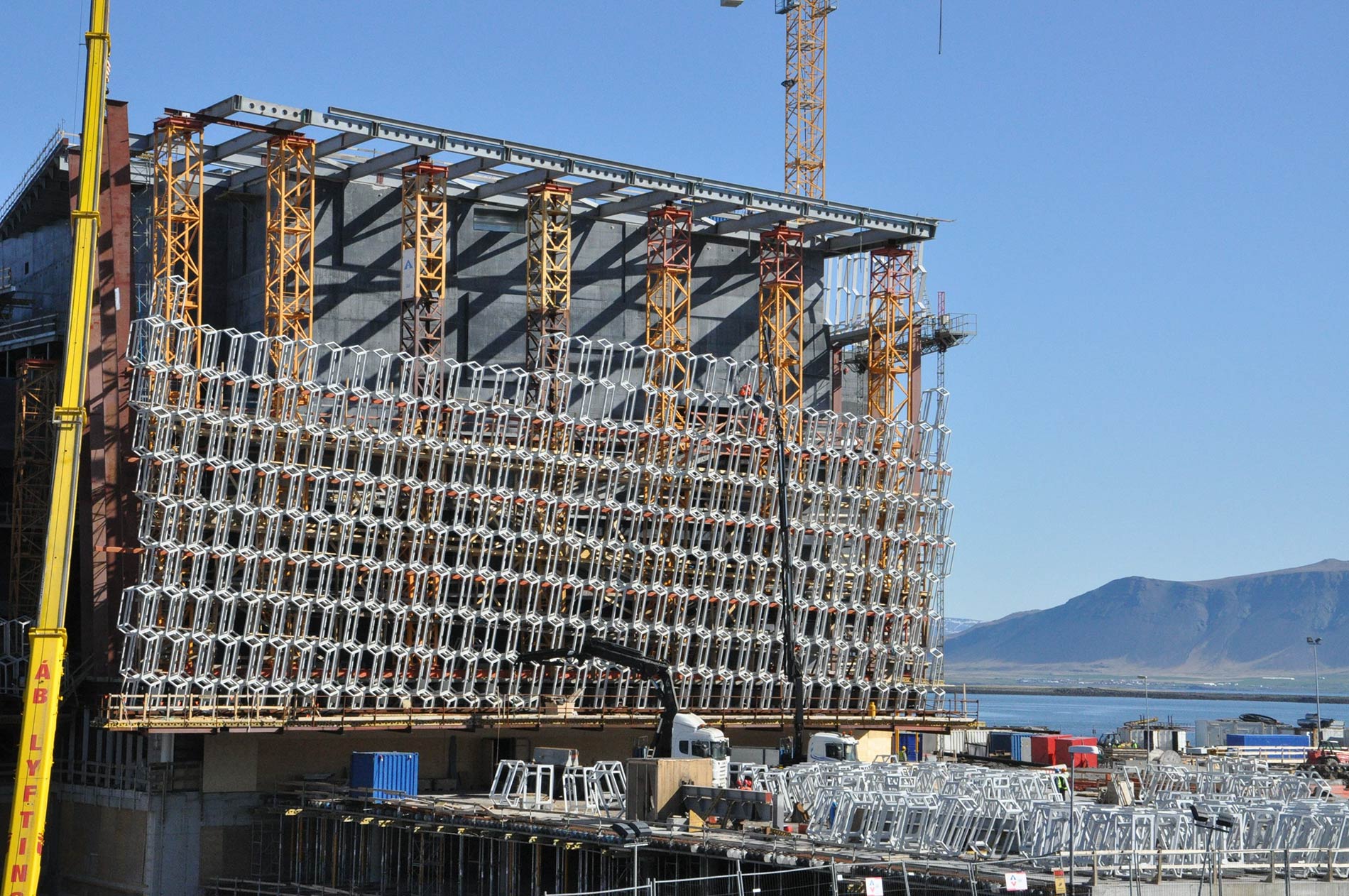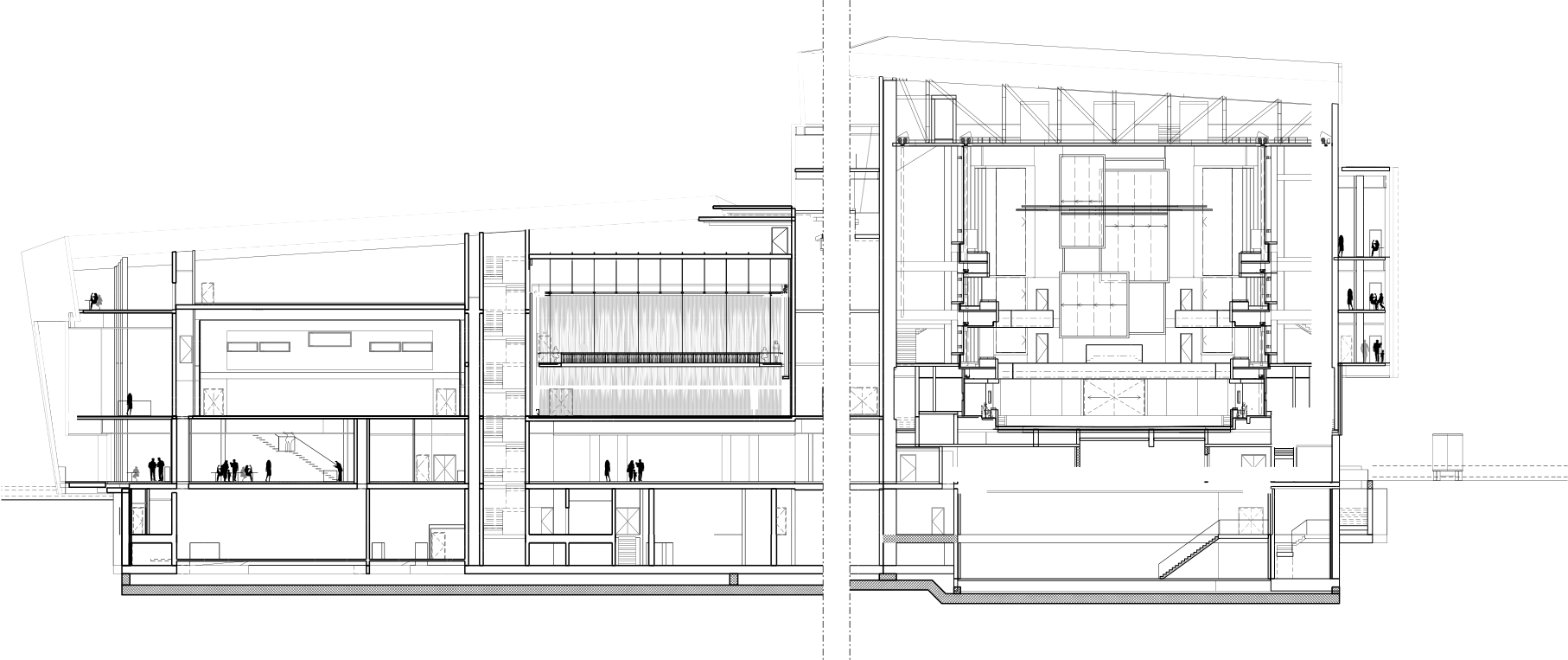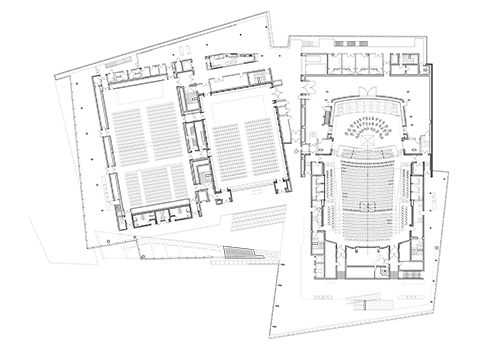-
The Harp that Sang
The saga of Reykjavík’s Harpa Concert HallBy Sophie Lovell & Fiona Shipwright
-
Reykjavík’s giant Harpa Concert Hall and Conference Centre has courted controversy both before and since the 2008 financial crash. It has been decried as a pivotal cause of all woes in one breath and celebrated as the city’s saviour in another. Now that the dust and the stock markets have settled somewhat, how is this building faring, in the face of mercurial Nordic coastal weather conditions and public opinion?
Previous page: detail of the Harpa’s polyhedral façade design. This page: south façade of the Harpa Concert Hall and Conference Centre. (All images courtesy Ólafur Elíasson, unless otherwise stated)
-
Right from the start, the Harpa project was a very grand plan for such a small place. Why did the most northerly capital in the world and its 120,000 residents need a vast 28,000 square metre concert hall complex? In the pre-crash era, when the Bilbao Effect was still a bit of a thing, it perhaps wasn’t so much because Reykjavik needed to build such a showstopper, more that, with so much banking money washing around pre-crash, it felt that it could.
So the dream took flight in the form of a PPP (Public Private Partnership) competition launched in 2004, seeking designs for both the hall and the redevelopment of a prime site by Reykjavik’s harbour on the north western edge of the old city centre. The winning design came from Portus Group, a team that comprised Danish firm Henning Larsen Architects, Icelandic practice Batteríið Architects and the Danish-Icelandic artist Ólafur Elíasson – the latter coming up with what was to become the building’s distinctive polyhedral façade. From without the building looks rather like two massively angular conjoined rocks that have come to rest by the harbour. From within, the enormous light-filled atrium foyer, which connects eight floors, affords visitors magnificent views out to sea, to the Esja mountain and back across the city. The architecture and context are striking, but it is the façade that draws the attention. Its mesh of interlocking crystalline units is glazed in iridescent glass filled with rainbow colours. They also have light elements built in which make the building shiver and glow in ever-changing patterns. Elíasson intended his facade not just as a skin, but as “an integrated part of the building”. Its stackable “quasi brick” modules are based upon five-fold-symmetry, inspired by the crystallised basalt columns found throughout the country and developed by the late Einar Thorsteinn, an Icelandic architect and Elíasson’s close collaborator in the latter’s Berlin studio.Back in 2004, the concert hall’s prime harbour front plot had been earmarked as the place where the country could finally make good on its longstanding promise to build a venue for Iceland’s musical heritage. The pedigree of that history, which stretches from centuries-old folk songs to the pop superstar success of Björk, Sigur Ros, Múm et al, had already instigated an influx of visitors to the country, attracted by “coolness” in every sense of the word. Construction began in 2007, only to be abruptly halted in in 2008 when the island’s finances froze and the private funding collapsed.
There then followed a great deal of soul-searching and “clever financing” in an attempt by the city to save what was supposed to be its pride and joy from becoming an orphaned and abandoned embarrassment. It was the state/municipally owned East Harbour Project (EHP) in the end that adopted the Harpa and brought it in from the cold. Where private financing failed, the state, and therefore the people, had to step in. Work was resumed work in May 2009 and the building was eventually completed in 2011.
-

Testing the five-fold-symmetry of the façade’s “quasi brick” modules.
 The building’s distinctive polyhedral façade in mid-construction.
The building’s distinctive polyhedral façade in mid-construction. -
During that same period, Iceland lost many financial friends in the EU, but when it came to architecture, the view was apparently more positive. Harpa was awarded the EU’s Mies van der Rohe Prize in 2013, the jury of which noted “with satisfaction” that it had “captured the myth of a nation – Iceland – that has consciously acted in favour of a hybrid-cultural building during the middle of the ongoing Great Recession.”
However it was precisely this “favour” for the construction of such a giant concert hall between 2008 and 2011, that some Icelanders objected to – it seeming to be the country’s only visible construction project at the time. For in the aftermath of the crash some argued that it would have been better to add Harpa to the catalogue of the island’s unrealised architectural dreams, leaving the half-finished shell on the plot as a ruin-porn reminder of the financial cataclysm wrought there.
Eldborg (“Fire Mountain”), the largest concert hall at Harpa. (Image courtesy Harpa)
-
But realistically, with Reykjavik’s capital-of-cool-syndrome looking like one of the only viable cash-rich lifelines, the cost in terms of reputational damage to the country might have been greater than the financial means needed to finish the project.
The Harpa has four concert halls, each representing one of the four elements of nature: earth, wind, water and fire. The largest, Eldborg (meaning “fire mountain”), is intended to mimic a red-hot rock core and can seat an audience of 1,800. Like its smaller counterparts, its acoustics were designed by Artec Consultants and each can be “tuned” according to the particular music it is hosting. The hall began to resonate “officially”on May 4, 2011 with a concert performed by the Icelandic Symphony Orchestra, conducted by Vladimir Ashkenazy, the Russian-born pianist who moved to the county in 1968 following his emigration from the USSR.

Section view of the Harpa. (Illustration courtesy Henning Larsen Architects)
-
»Where private financing failed, the state, and therefore the people, had to step in.«
-

Harpa Reykjavík Concert Hall and Conference Centre, 2005-2011
Architects: Henning Larsen Architects and Batteríi∂ Architects.
Façade design and development: Ólafur Elíasson and Studio Ólafur Elíasson in collaboration with Henning Larsen Architects.
Eignarhaldsfélagi∂ Portus Ltd., Reykjavik, Iceland.
A long-term resident of the island, he established the influential Reykjavík Arts Festival in 1970 and has held Icelandic citizenship since 1972.
Since then, the audiences from home and abroad have continued to make a trip to the “harp” by the harbour. Whilst Icelandic music occupies a special place in the hearts of contemporary music journalists, not for Harpa the obscure elitism they have a tendency to champion. The tuning capability of the halls proves its worth in this regard. The electronic/alternative Iceland Airwaves festival remains a yearly fixture on the Harpa calendar but the main programme is dominated by more mainstream crowd-pleasers such as Carmen, Stomp, and a Led Zeppelin tribute band (the real one having played Ashkenazy’s 1970 festival).
Whilst this might grate upon some of Reykjavik’s younger residents, they should probably be applauding this popular music programme encouraged by the current director Halldór Guðmundsson, given that without them they will likely end up paying for the building beyond the predicted 2046, and well into their old age.
Particularly in architecture and city planning, big dreams always tend to be tempered by compromise. But, as Guðmundsson assured uncube, in this case “the one thing which is not a compromise is the building itself” and, having welcomed 1.5 millions visitors through the door last year he is optimistic about the future fortunes of the building. With an almost new building in good shape and functioning well, the signs look very promising that the Harpa will turn out to be a golden harp for the city after all, but as the locals know from centuries of experience, the fortunes of this beautiful island can be as fickle as the weather and nothing here can ever be taken for granted. I
Previous page: Reykjavík Harbour through the Harpa’s glass façade.
-
Search
-
FIND PRODUCTS
PRODUCT GROUP
- Building Materials
- Building Panels
- Building technology
- Façade
- Fittings
- Heating, Cooling, Ventilation
- Interior
- Roof
- Sanitary facilities
MANUFACTURER
- 3A Composites
- Alape
- Armstrong
- Caparol
- Eternit
- FSB
- Gira
- Hagemeister
- JUNG
- Kaldewei
- Lamberts
- Leicht
- Solarlux
- Steininger Designers
- Stiebel Eltron
- Velux
- Warema
- Wilkhahn
-
Follow Us
Tumblr
New and existing Tumblr users can connect with uncube and share our visual diary.
»I hate vacations. If you can build buildings, why sit on the beach?«
Philip Johnson
Keyboard Shortcuts
- Supermenu
- Skip Articles
- Turn Pages
- Contents


